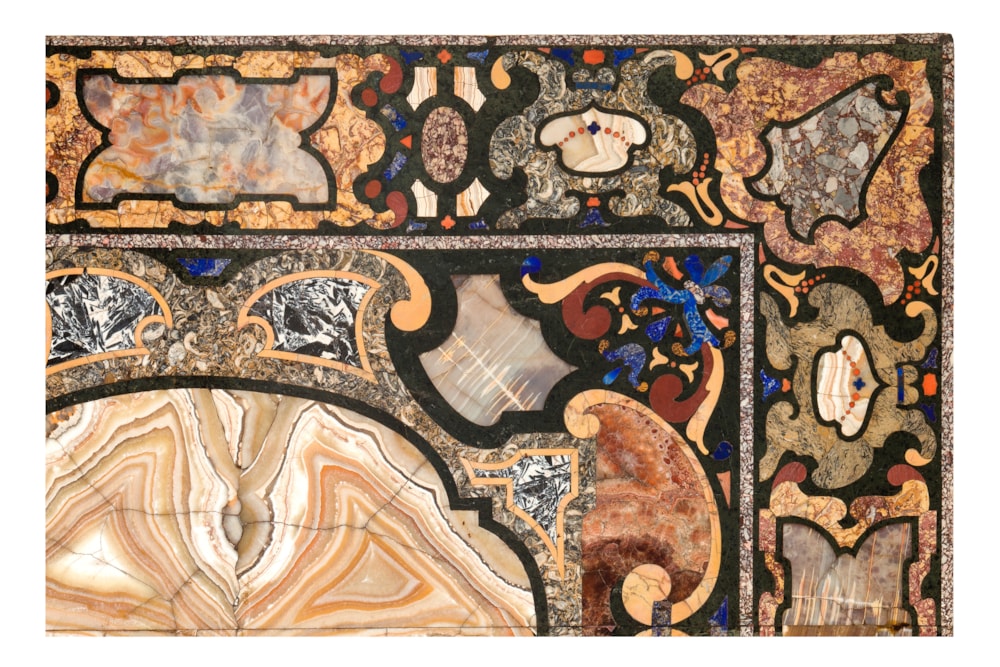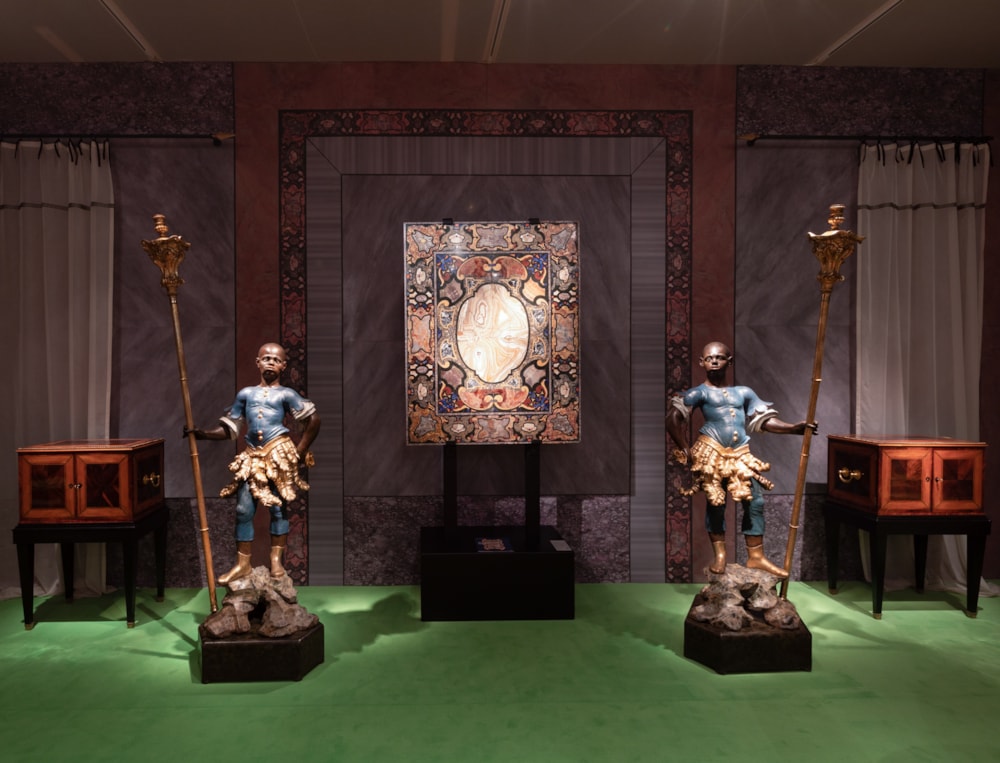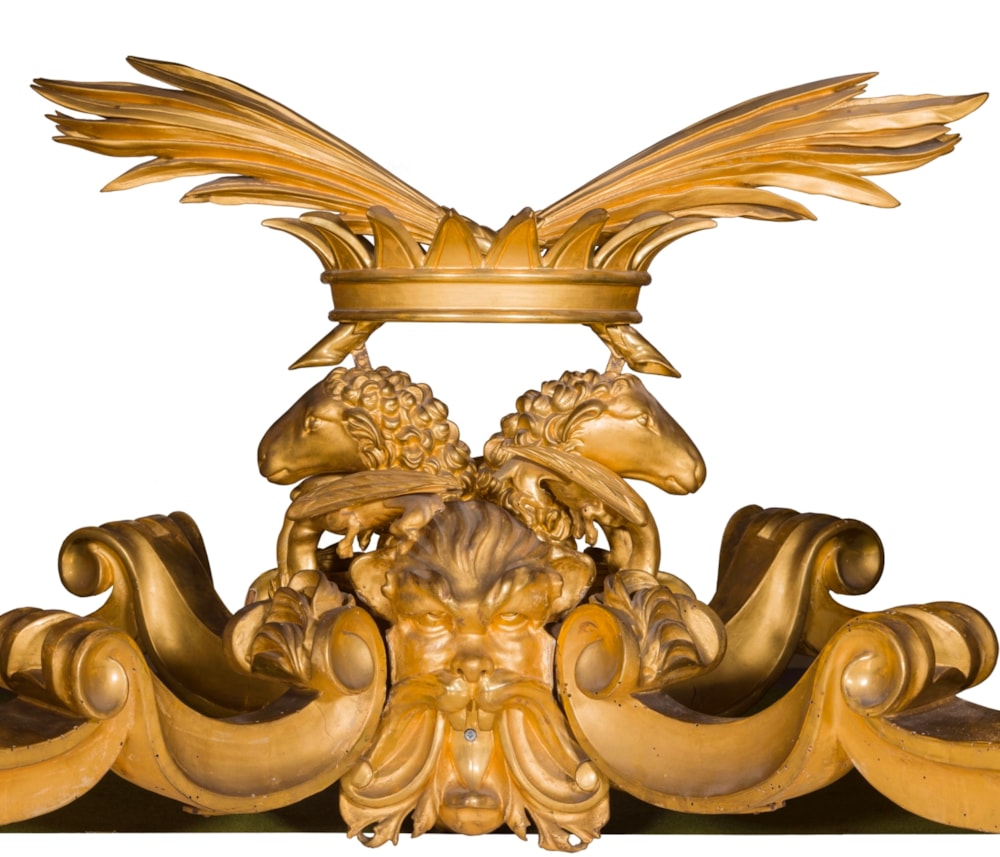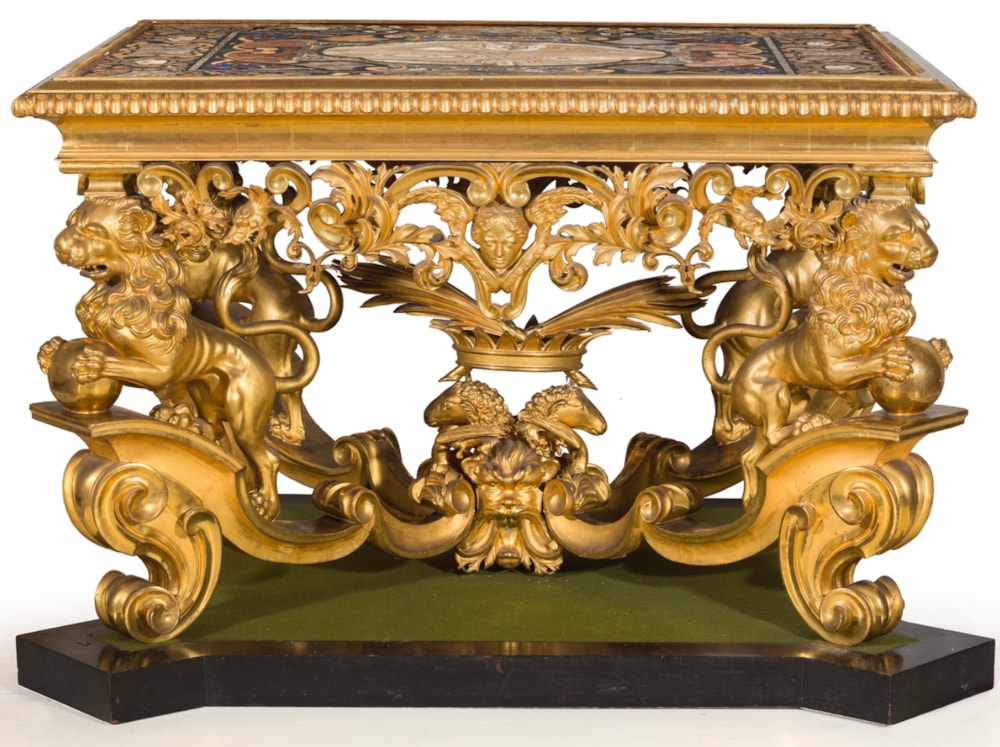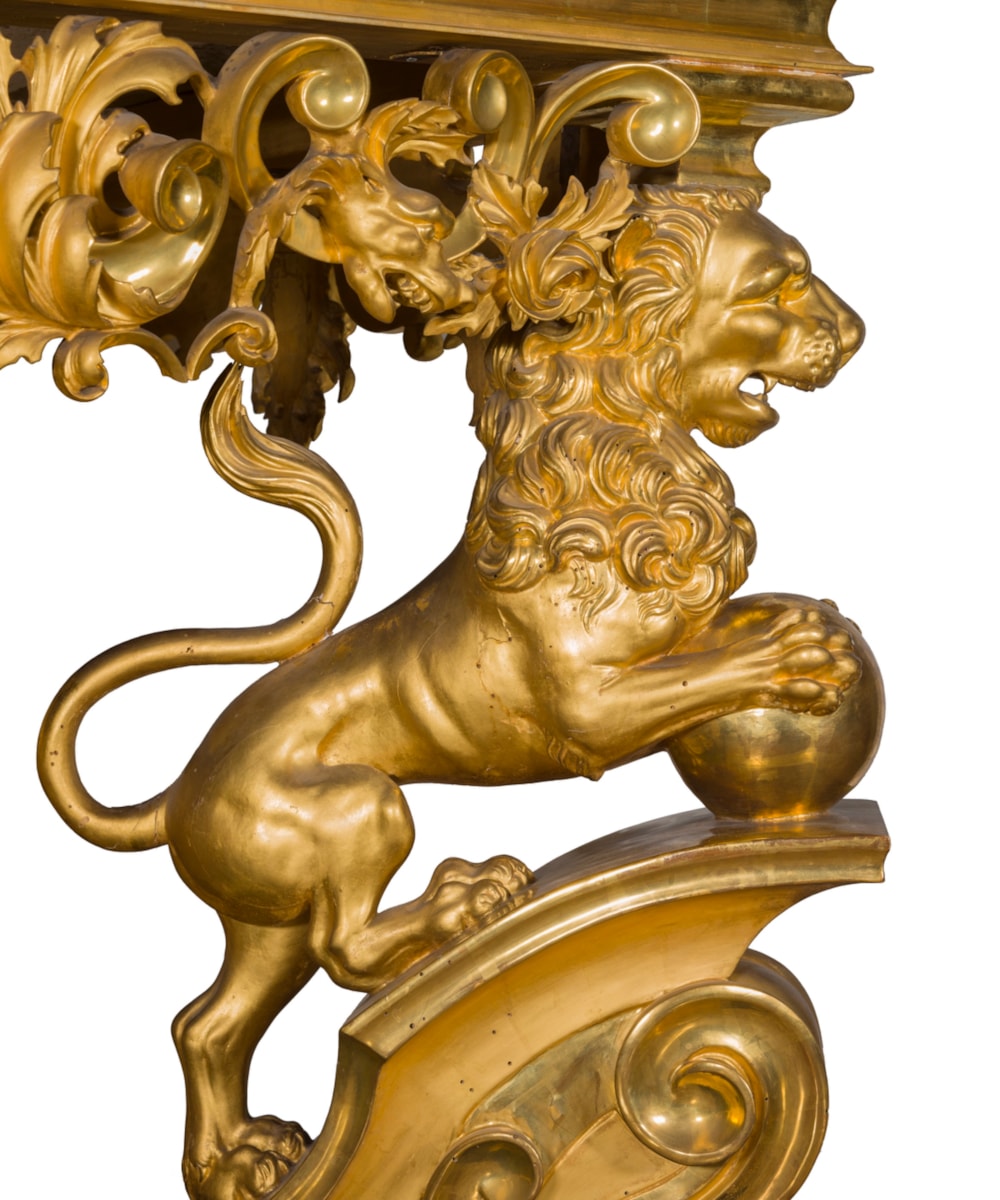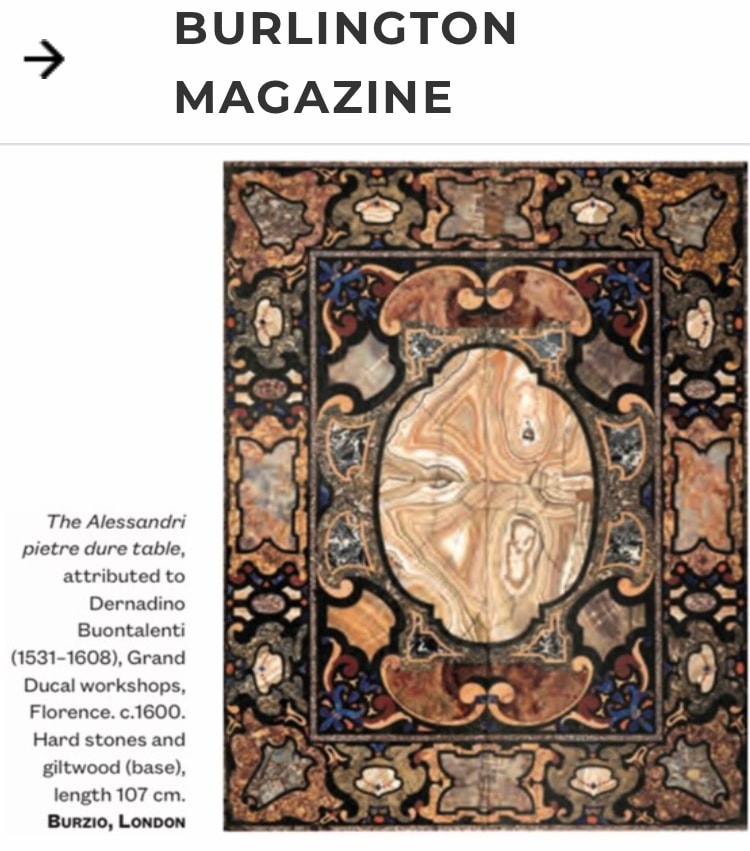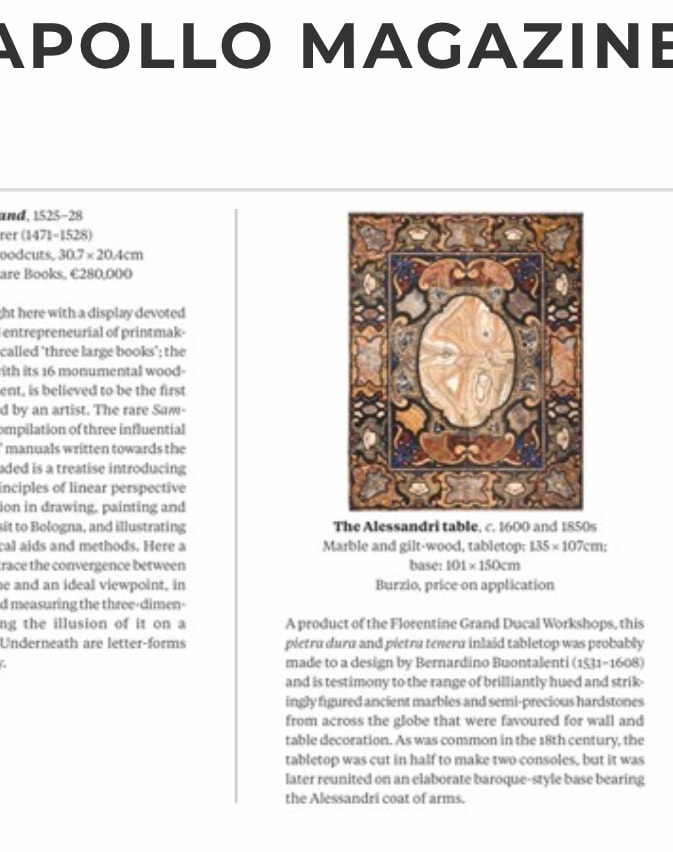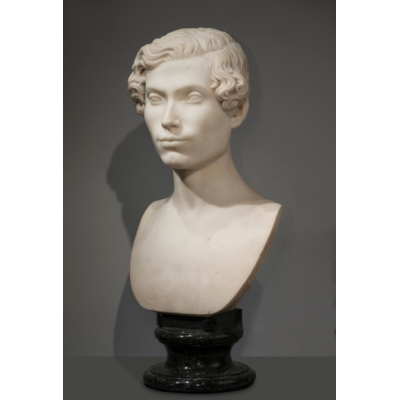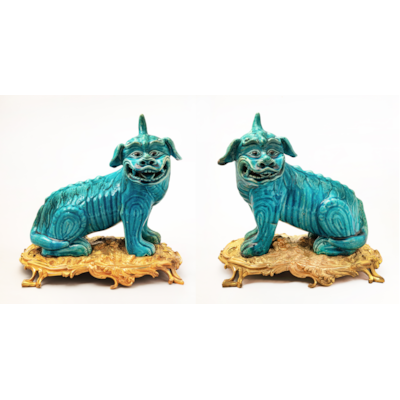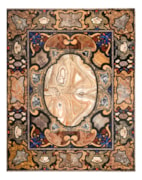
Bernardo Buontalenti ( 1531 - 1608 )
A Buontalenti Florentine pietra dura table.
Florence 1600 and 1850
Provenance
Alessandri family Florence.
ASF,Archivio Alessandri, cassetta 63, fasc.”minute d’inventari”, cc. after n.257
Literature
R. Gnoli, A. Sironi (a cura di), A. Del Riccio, Istoria delle pietre, Torino, 1996
E. Colle, I mobili di Palazzo Pitti. Il periodo dei Medici 1537 – 1737, Firenze 1997
A. Gonzàlez – Palacios, Pittura per l’eternità. Le collezioni reali spagnole di mosaici e pietre dure, Milano 2003
A. M. Giusti, in U. Baldini, A. M. Giusti, A. Pampaloni Martelli (a cura di), La Cappella dei Principi e le pietre dure a Firenze, Milano 1979
A. Giusti, L’arte delle pietre dure da Firenze all’Europa, Firenze 2005
A. Giusti, Arte regale: pietre dure da Firenze alle corti d’Europa, in S. Rossi, P. Assmann, A. Patera (a cura di), “pietre colorate molto vaghe e belle” Arte senza tempo dal Museo dell’Opificio delle Pietre Dure, catalogo della mostra, Mantova 2018, pp. 118 -137
Detail Description
An Italian pietre dure and pietre tenere inlaid table top, probably to a design of Bernardo Buontalenti (1531-1608), Granducal Workshops, Florence, 1600 circa; On its later XIX c.carved and giltwood stand with the arms and the symbols of Alessandri family.
On its Florentine baroque style carved and gilt-wood base in the manner of Giovan Battista Foggini with four lions on the corners joint by a stretcher with the Alessandri coat of arms, on a ebony English patent plinth on wheels normally used for these kind of center tables in Pitti and Uffizi at the end of XIX c.
The dark green top, Nero di Prato, incorporating few types of very fine hard stones including corals, lapis lazuli, cornelians mostly has various precious ancient marbles inlaid and more precisely: Alabastro cotognino, alabastro marino, alabastro dorato and alabastro fiorito, bianco, nero and giallo antico, lumachella bigia, breccia d’Aleppo, semesanto and broccatello di Spagna. The top has been separated in two parts in the XVIIIc. for create two consoles table tops and joint back with some restorations when the stand has been executed for it in the middle of XIX c.
The complete printed essay, available on application, it was written by Enrico Colle, Stibbert Museum Director in Florence. Other than the inventories of the Alessandri family related to the present piece, the thorough research he carried out in Florentine archives led to the discovery also of documents identifying with certainty the other pietra dura table top with Medici and Westminster provenance recently acquired by an important public collection with “il tavolino di gioje” designed in 1568 by Giorgio Vasari for Francesco I De Medici.
Catalogue on line:
www.lucaburzio.com/publications
Print Format
Additional images
